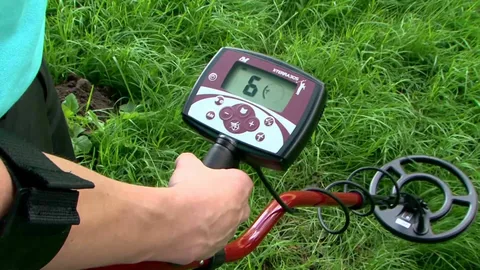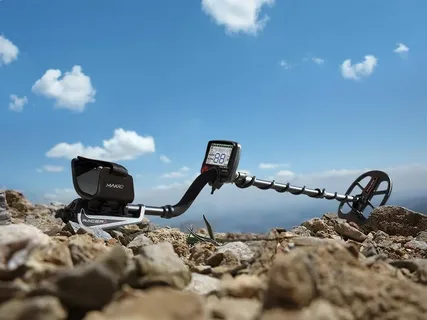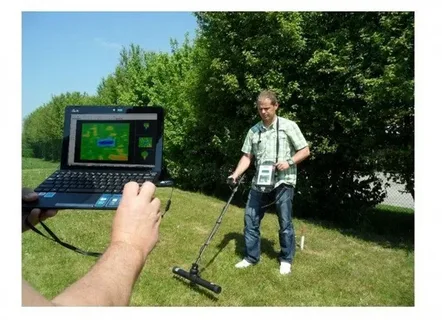Gold mining is a fascinating and lucrative industry that has been prevalent for centuries. The extraction of gold from the earth involves a complex process that requires innovative techniques and strategies to ensure profitability. In this exploration of gold mining, we will delve into the various techniques and methods used by industry professionals to extract gold, as well as the factors that contribute to the profitability of this endeavor. Join us as we uncover the world of gold mining and discover the intricate processes and strategies that make it a successful and enduring industry.
“Exploring the World of Gold Mining: Techniques and Profitability” is a comprehensive guide to the various techniques and strategies used in gold mining operations around the world. The book delves into the processes and technologies involved in extracting gold from the earth, as well as the economic factors that impact the profitability of gold mining ventures. Readers will gain a thorough understanding of the industry, from traditional mining methods to the latest advancements in technology and sustainability. This valuable resource is essential for anyone interested in learning about the complex world of gold mining.
The History and Future of Gold Mining

Gold mining has a long history that dates back thousands of years, with evidence of gold mining in ancient civilizations such as the Egyptians and Romans. The discovery of gold in various parts of the world has led to major gold rushes, such as the California Gold Rush in the 19th century. This has contributed to the expansion and development of many regions, and the establishment of new towns and cities.
In the modern era, gold mining has seen advancements in technology and mining methods, leading to increased efficiency and productivity. However, the process of gold mining has also brought about environmental concerns and social conflicts, particularly in indigenous communities and fragile ecosystems.
Looking to the future, gold mining is expected to continue, driven by the demand for gold in various industries such as jewelry, technology, and finance. With the depletion of easily accessible gold reserves, the industry is turning to more challenging and less environmentally friendly methods of extraction, leading to further debates on sustainability and responsible mining practices.
Additionally, the growing interest in sustainable and ethical sourcing of minerals has prompted the gold mining industry to improve its environmental and social practices. This includes efforts to minimize the environmental impact of mining operations, as well as initiatives to support local communities and indigenous rights.
Overall, the history and future of gold mining reflect the complex interplay between economic, environmental, and social factors, and the industry continues to navigate these challenges as it moves forward.
The Environmental Impact of Gold Mining

Gold mining has a significant environmental impact, mainly due to the large amounts of waste and chemicals generated during the extraction process. Large-scale gold mining operations can result in deforestation, soil erosion, and habitat destruction. Additionally, the use of toxic chemicals such as cyanide in the extraction process can lead to widespread water pollution and harm to aquatic ecosystems. Furthermore, gold mining can contribute to air pollution through the release of mercury and other harmful emissions. Overall, the environmental impact of gold mining is a complex issue that requires careful management and regulation to minimize its negative effects.
The Techniques and Technologies of Gold Mining

Gold mining involves various techniques and technologies to extract gold from the earth. Some common methods include placer mining, which involves using water to separate gold from sediment, and hard rock mining, which involves drilling and blasting to access gold veins trapped within the rock.
Other technologies utilized in gold mining include cyanide leaching, where cyanide is used to dissolve gold from the ore, and gravity separation, which uses the density difference between gold and other minerals to separate the two.
Modern gold mining also involves the use of heavy machinery, such as bulldozers, excavators, and crushers, to extract and process gold-bearing ore. Additionally, advancements in aerial surveying and satellite imaging have improved prospecting and exploration techniques, leading to more efficient and environmentally friendly mining operations.
The Economics of Gold Mining

The economics of gold mining involves the cost of extraction, processing, and transportation of the ore, as well as the market price of gold. The profitability of a gold mining operation depends on the efficiency of these processes, as well as the scale of the operation and the quality of the gold deposits. Additionally, factors such as government regulations, labor costs, and environmental concerns can impact the economics of gold mining. Overall, the economics of gold mining is influenced by a complex interplay of market forces, operational costs, and external factors.
The Risks and Rewards of Gold Mining
Gold mining can be a high-risk, high-reward endeavor. The potential rewards of gold mining include the potential for significant profits and financial gains. Gold is a precious metal with a long history of being valued and sought after, and its price has historically fluctuated, presenting opportunities for those involved in its extraction and trade.
However, there are also significant risks associated with gold mining. Environmental concerns such as deforestation, soil erosion, and water pollution are common in gold mining areas. Additionally, the social and economic impacts on local communities can be negative, including displacement of people and disruption of local economies.
From a financial perspective, gold mining can also be unpredictable. The cost of extraction can be high, and the price of gold is subject to market fluctuations. Additionally, political and regulatory risks in mining jurisdictions can affect the profitability of operations.
Overall, the risks and rewards of gold mining make it a complex and challenging industry to navigate. It is important for individuals and companies involved in this sector to carefully consider these factors and to work towards sustainable and responsible mining practices.
The Global Significance of Gold Mining
Gold mining has significant global significance due to its impact on economies, trade, and environmental and social issues. It is a major source of revenue for many countries and contributes to their GDP. The gold mining industry also plays a crucial role in global trade as gold is widely traded and used as a store of value and a form of currency.
However, gold mining also poses environmental and social challenges, as it can lead to deforestation, pollution, and displacement of local communities. Additionally, the use of toxic chemicals such as cyanide in the extraction process can have detrimental effects on ecosystems and human health.
Furthermore, gold mining has geopolitical implications, as it can lead to conflicts over land and resources. In some cases, gold mining has been linked to human rights abuses and funding of armed conflicts.
Overall, the global significance of gold mining extends beyond its economic impact, encompassing environmental, social, and geopolitical dimensions. It is important to consider these broader implications when assessing the value and consequences of gold mining on a global scale.
The Regulation and Governance of Gold Mining
See also: gold prospecting tools
The regulation and governance of gold mining involves the development and enforcement of laws, policies, and standards that guide the exploration, extraction, and processing of gold. This includes ensuring environmental protection, health and safety measures, land use and conservation, as well as addressing social and economic impacts on local communities. Regulatory agencies such as the Environmental Protection Agency (EPA), Occupational Safety and Health Administration (OSHA), and local government bodies play a key role in overseeing and monitoring gold mining activities to ensure compliance with established regulations. Additionally, international organizations and initiatives such as the Extractive Industries Transparency Initiative (EITI) work to promote transparency and accountability in the governance of natural resources, including gold mining.
The Social and Cultural Effects of Gold Mining
Gold mining has significant social and cultural effects on communities near mining sites. The influx of workers into these areas can lead to population growth, overcrowding, and strain on local infrastructure and resources. This can also lead to increased crime rates and changes in social dynamics within the community.
Furthermore, gold mining can have detrimental effects on the environment, which in turn impacts the cultural and social aspects of the community. Pollution of water sources, deforestation, and loss of biodiversity can all have profound effects on the cultural practices and traditions of indigenous communities who rely on the natural resources for their way of life.
Additionally, the economic boom and bust cycles associated with gold mining can have long-lasting social and cultural effects on communities. When the mining industry is booming, there may be an influx of wealth and new opportunities, but when the industry declines, communities can be left struggling with unemployment, economic instability, and social upheaval.
Overall, the social and cultural effects of gold mining are complex and multifaceted, and it is important for mining companies and local governments to consider the long-term impacts on communities and work together to mitigate any negative consequences.
The Innovation and Exploration in Gold Mining
The innovation and exploration in gold mining have greatly advanced the industry, leading to increased efficiency and productivity. New technologies such as automated machinery, drones, and digital mapping have revolutionized how mining companies locate and extract gold deposits. In addition, sustainable mining practices and environmental consciousness are also being prioritized, leading to more responsible and ethical mining operations. These advancements have not only improved the safety and working conditions for miners but have also contributed to minimizing the environmental impact of gold mining. Overall, the innovation and exploration in gold mining have propelled the industry forward, ensuring its continued relevance and sustainability.
The Ethical Considerations of Gold Mining
Gold mining can raise a range of ethical considerations, including environmental impact, labor practices, and community development. The use of toxic chemicals such as cyanide and mercury in the gold mining process can have severe environmental consequences, including water pollution and deforestation. Labor practices in gold mining operations are often a concern, with reports of unsafe working conditions and exploitation of workers, including child labor. In addition, gold mining can have complex effects on local communities, including displacement, disruption of traditional livelihoods, and social conflict. Ethical gold mining practices seek to minimize these negative impacts and support sustainable and responsible mining operations.












